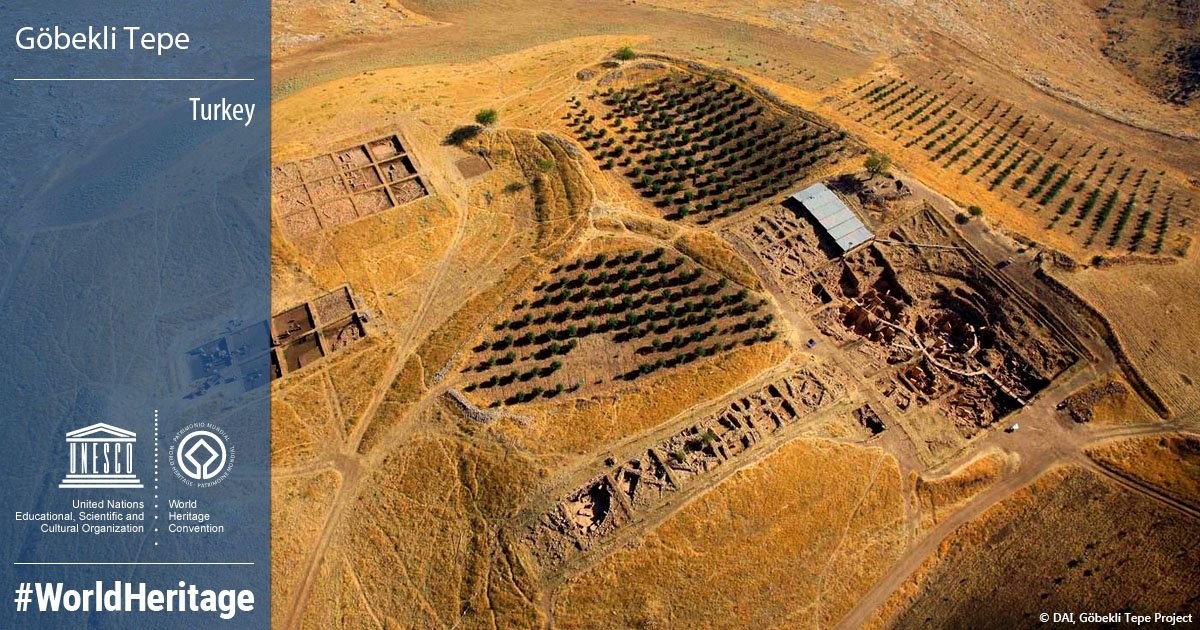
All Eyes are Once Again on Gobeklitepe
After being listed amongst UNESCO’s Tentative List, this month, in July 2018, Gobeklitepe has been added to the UNESCO’s World Heritage List. The decision was taken in Bahrain’s capital, Manama, where the 42nd UNESCO World Heritage List Committee Meeting was held.[1]
Located on the highest point of Germuş mountain[2], about 15 km north-east of Şanlıurfa, Gobeklitepe posses a wide range and can be seen from far away. (Schmidt, 2010, p. 239). The excavations at the site started in 2007 and the findings never stopped to astonish intelligentsia ever since.
Why Gobeklitepe is so striking?
Schmidt, the archeologist who had been working in Gobeklitepe for almost 20 years, describes Gobkelitepe as an “artificial mound dating to the Pre-Pottery Neolithic.” It was all fascinating for the intelligentsia to explore Gobeklitepe as the findings were revolutionary for the known history. The findings contributed to “a completely new understanding of sedentarism and the beginning of agriculture” (2010, p. 239).
Today, the t-shaped pillars are known all over the world as the symbol of Gobeklitepe. They, for Schmidt, are obviously anthropomorphic statutes for the cross shape can be interpreted as arms and a head of a human figure. On the pillars can be seen a variety of animals such as “predatory cats, bulls, wild boar, foxes, ducks, cranes, gazelles, wild asses, snakes, spiders, and scorpion”. (Schmidt, 2010, p. 245) Although there is still dispute over the significance of these animals, Oliver suggest that, these symbols can be related to myths or tales important for the groups building them (Oliver, 2017). Another explanation according to Oliver is that the reliefs can be related to death or ancestor cult of Neolithic groups.
Some of the famous T-shaped monolithic pillars, were dating back to the 10th millennium calBC[3], which was once considered as the time when people were living as hunter-gatherers (Schmidt, 2010, p. 240). The site was a concrete proof of earlier settlement, as the religious practices at a site can only be a result of sedentarism. However, the site itself was not a place of settlement. According to Schmidt, it was a sacred area, belonged to a religious sphere. (2010, p.240)
Oliver argues that, on the other hand, Gobeklitepe is path-breaking not because of possible early sedentarism but because it proves cooperation that comes along symbolic material culture. According to known history, the Neolithic age was closely associated with warfare and continuous conflict amongst groups. However, Gobeklitepe presents “signs of evolving strategies for conflict mitigation and cooperation” (Oliver, 2017). Schmidt also argues that the ability to build enormous sized monuments needed cooperation. Producing such a symbolic material culture enables communities to generate their shared identities and cosmos, creating communities like our modern societies based on symbolic culture. (2010, p.254)
It is now clear that why Gobeklitepe has been listed for world heritage site by UNESCO. The site has been giving clues about the very beginnings of symbolic human culture and how this symbolic culture plays a major role in socialization of Early Neolithic groups. Gobeklitepe shows us the early stages of modern societies that can only exist trough cooperation based on symbolic meanings.
References
Oliver (2017). “Cooperative Action of Hunter-Gatherers in the Early Neolithic Near East. A View from Göbekli Tepe” in TepeTelegrams, https://tepetelegrams.wordpress.com/2017/06/01/cooperative-action-of-hunter-gatherers-in-the-early-neolithic-near-east-a-view-from-goebekli-tepe/
Schmidt (2010). “Göbekli Tepe – the Stone Age Sanctuaries. New results of ongoing excavations with a special focus on sculptures and high reliefs” in Documenta Praehistorica XXXVII, pp.239-256
https://www.aa.com.tr/tr/turkiye/gobeklitepede-unesco-sevinci/1192322
[1] https://www.aa.com.tr/tr/turkiye/gobeklitepede-unesco-sevinci/1192322
[2] https://tepetelegrams.wordpress.com/2017/06/01/cooperative-action-of-hunter-gatherers-in-the-early-neolithic-near-east-a-view-from-goebekli-tepe/
[3] The prefix cal indicates that the dates are result of radiocarbon calibration.